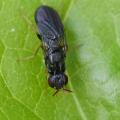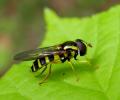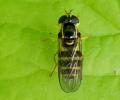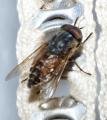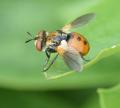Diptera.info :: Identification queries :: Diptera (adults)
Who is here? 1 guest(s)
|
Limoniidae; Limnophila schranki (was Eloeophila maculata?)
|
|
| kurt |
Posted on 18-03-2010 18:21
|
|
Member Location: Posts: 4330 Joined: 27.11.08 |
Can anyone help with a name on this one? Photo from Kramfors, ┼ngermanland, Sweden 62.53N 17.45 E 2 june 2009 Thanks for your help in advance Regards Kurt Holmqvist kurt attached the following image: 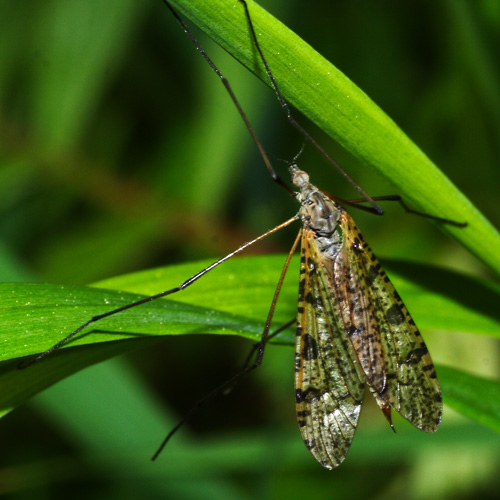 [88.78Kb] Edited by kurt on 13-11-2010 22:02 |
|
|
|
| paqui |
Posted on 18-03-2010 18:35
|
|
Member Location: Valencia (spain) Posts: 816 Joined: 02.09.05 |
I think it┤s Limnophilinae, try something near to Limnophila schranki, nice pic |
|
|
|
| kurt |
Posted on 18-03-2010 20:50
|
|
Member Location: Posts: 4330 Joined: 27.11.08 |
Thanks for your suggestion paqui. I have looked at it in gallleri and it looks a bit like schranki but I suppose there are many more Limnophila. Kurt Holmqvist |
|
|
|
| kurt |
Posted on 11-11-2010 16:43
|
|
Member Location: Posts: 4330 Joined: 27.11.08 |
I try to raise this one once again. Greatful for help Kurt Holmqvist |
|
|
|
| blowave |
Posted on 11-11-2010 23:41
|
|
Member Location: LINCOLN, UK Posts: 3151 Joined: 27.06.07 |
I have tried to find this in the key but it doesn't seem to be included.  I have found one which looks promising, Eloeophila maculata. There are of course other Eloeophila species, but 'maculata' often suggests lots of spots and your fly doesn't quite match up with any others I can find with so many spots. Look at this pic on Wiki. Janet http://cubits.org... |
| kurt |
Posted on 12-11-2010 19:56
|
|
Member Location: Posts: 4330 Joined: 27.11.08 |
Thanks one more time Jaet. We seems to have Eloeophila maculata, mundata, submarmorata and trimaculata in Sweden. Kurt Holmqvist |
|
|
|
| Walther Gritsch |
Posted on 13-11-2010 00:25
|
|
Member Location: Copenhagen Posts: 276 Joined: 31.01.09 |
As far as I can see there is no supernumerary crossvein in cell dm and therefore it can't be Eloeophila sp. I support paqui's suggestion. In fact I'm almost completely convinced it's Limnophila schranki. The species name in Janet's link is in my opinion also doubtful. At least I don't see any clear evidence of an extra crossvein. Regards, Walther |
|
|
|
| blowave |
Posted on 13-11-2010 02:51
|
|
Member Location: LINCOLN, UK Posts: 3151 Joined: 27.06.07 |
Walther Gritsch wrote: As far as I can see there is no supernumerary crossvein in cell dm and therefore it can't be Eloeophila sp. I support paqui's suggestion. In fact I'm almost completely convinced it's Limnophila schranki. The species name in Janet's link is in my opinion also doubtful. At least I don't see any clear evidence of an extra crossvein. Regards, I'm all ears! Or eyes.  I'm desperately trying to understand where this supernumeray crossvein should be, not having experience in this I'm trying to learn. The best I can do is google to see if I can find it, what I found is difficult to understand.. this is a 2009 document. I'm desperately trying to understand where this supernumeray crossvein should be, not having experience in this I'm trying to learn. The best I can do is google to see if I can find it, what I found is difficult to understand.. this is a 2009 document.The wing venation is rather uniform within the genus, yet variable in detail even within a species. Some species differ in the position of the supernumerary m-cu in respect to the extent of Rs or the tip of A2 and the comparative length of fork M1-M2 and its petiole (M1 2), but these differences may have little taxonomic value. http://findarticl...4536/pg_2/ The yet variable in detail even within a species and mention of As usual, the structure of the male terminalia is essential for distinguishing the species, yet identification may be difficult due to the uniformity of some structures and variability of others. does make this seem impossible from a single pic.I found references with Eloeophila as being included under Limnophila in many places! That is, Limnophila (Eloeophila). Wiki has a page of images, with both these species showing the wings, how accurate they are I don't know but most are from the Commanster site and I'm not sure how accurate they are. http://commons.wi...Limoniidae Does anyone know of a (preferably internet) source for all Limoniidae? http://cubits.org... |
| kurt |
Posted on 13-11-2010 16:26
|
|
Member Location: Posts: 4330 Joined: 27.11.08 |
Thanks a lot for your attention Janet and Walther. I have lookt for orginal pictures and made a pair of cropped pictures. It seems that it resembles Limnophila schranki wing here in Gallery but with much more dark spots. Thanks once again Kurt Holmqvist kurt attached the following image: 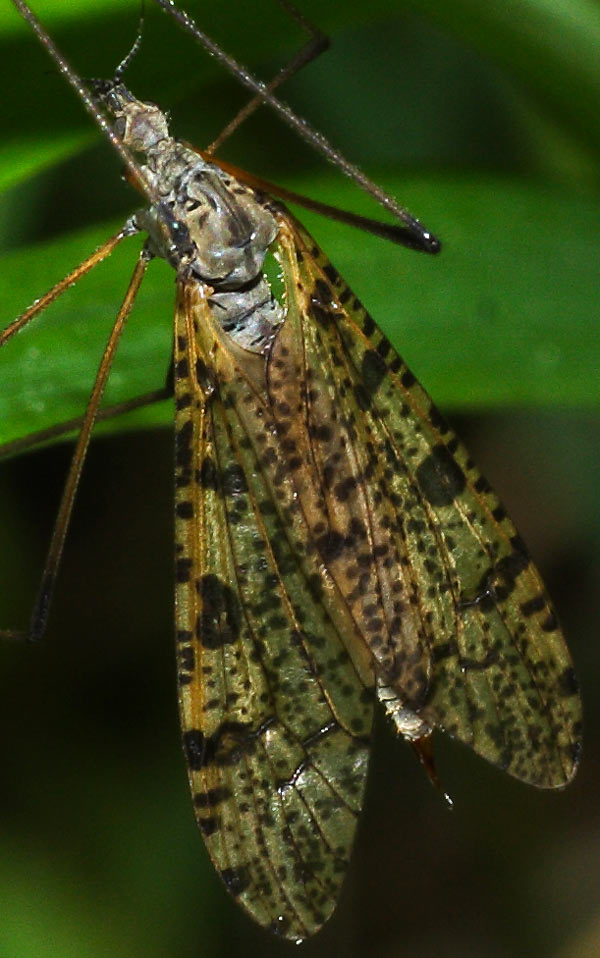 [95.09Kb] |
|
|
|
| kurt |
Posted on 13-11-2010 16:27
|
|
Member Location: Posts: 4330 Joined: 27.11.08 |
And a crop from another picture
kurt attached the following image: 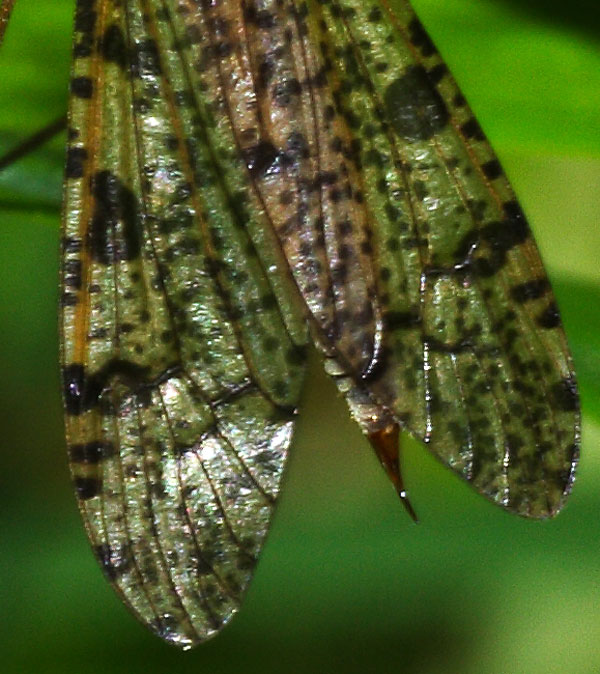 [99.15Kb] |
|
|
|
| Dmitry Gavryushin |
Posted on 13-11-2010 17:15
|
|
Member Location: Moscow region, Russia Posts: 3303 Joined: 17.10.05 |
Limnophila for sure. |
|
|
|
| Walther Gritsch |
Posted on 13-11-2010 21:51
|
|
Member Location: Copenhagen Posts: 276 Joined: 31.01.09 |
Just to make things clear... If there would have been a supernumerary crossvein (which there isn't) in cell dm it would have been where I've put the white line. The number of dark spots on the wing is quite variable in Limnophila schranki. The term dm is perhaps not the best to use when dealing with Tipuloidea - bm would be the appropriate  Regards, Walther Gritsch attached the following image:  [165.97Kb] Walther |
|
|
|
| kurt |
Posted on 13-11-2010 22:00
|
|
Member Location: Posts: 4330 Joined: 27.11.08 |
Thank you very much for your good explanation Walther. Kurt Holmqvist |
|
|
|
| blowave |
Posted on 13-11-2010 23:12
|
|
Member Location: LINCOLN, UK Posts: 3151 Joined: 27.06.07 |
Walther Gritsch wrote: Just to make things clear... If there would have been a supernumerary crossvein (which there isn't) in cell dm it would have been where I've put the white line. The number of dark spots on the wing is quite variable in Limnophila schranki. The term dm is perhaps not the best to use when dealing with Tipuloidea - bm would be the appropriate  Regards, Thank you Walther, it's good to ask questions then in future, hopefully, we might remember these things. You see why I was confused about cell dm as all the examples of Limoniidae show it on this site. Janet http://cubits.org... |
| blowave |
Posted on 14-11-2010 15:56
|
|
Member Location: LINCOLN, UK Posts: 3151 Joined: 27.06.07 |
Sorry to bring this up agian, but I have found the keys for these in another pdf I have for Limnophilinae. It states that if the femora are black in the apical half grading into yellow basal half, that brings us to Limnophila schranki. Femora with only black apical ring, otherwise yellowish takes us to 3 species, one being Limnophila arnoudi which looks to be most likely. From the key: Tergite 9 less extended, no or only a small median notch. Inner style less bulbose at base. Sternite 8 curved at apex. Wing generally broader. The other two are L. pictinpennis (genitalia with a broader style, wings generally broader) and L. angustipennis (style very narrow, wing usually very narrow.) The wing venation looks to fit Limnophila arnoudi, with a slightly smaller dm cell but also the cross-vein between CuA1&2 is not complete on the other two and generally in a different place. I'm still not sure about whether the cell dm matches L. schrankii better, or L. arnoudi, but in the later close up view the femora don't look to be black in the apical half. I though I should bring this up as there is a possibility it is L. arnoudi? If not, this is all good for awareness! The wings.. where femora marked 2 is L. schranki. blowave attached the following image: 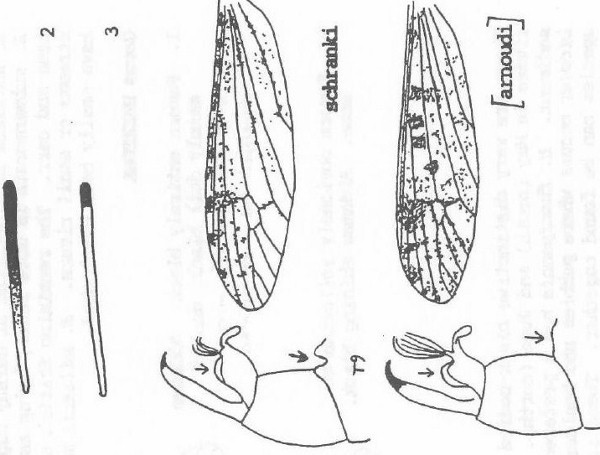 [64.44Kb] http://cubits.org... |
| Chen Young |
Posted on 14-11-2010 22:25
|
|
Member Location: Pittsburgh, PENNSYLVANIA USA Posts: 169 Joined: 25.08.05 |
Here is some speceies of North America Limoniidae might be of interest to you, and here also is a brief account of some morphological terms for your reference. These sections are not completed yet and will be updated often. Be aware of the fact that the image only represents one individul of a large population, and there is always variation exist. Also when shooting crane fly images, the flash of the camera could alter the recorded color to the point that the photography does not accurately display the true color. So it is tough to put the precise specific name on an image than a generic name. A specimen in hand would hopefully resolve that problem but again when the specimen in hand is a female specimen, it presents another challenge since as you may know that most of the keys are bias towards male specimens. I appreciate all the awareness you have brought out, just don't get frustrated when makoig effort to id them. Hang in there! Edited by Chen Young on 14-11-2010 22:29 |
| blowave |
Posted on 15-11-2010 20:07
|
|
Member Location: LINCOLN, UK Posts: 3151 Joined: 27.06.07 |
Thank you Chen, I will hang in there! I am trying to be methodical in my approach, the only way to go really. I had found the North America Limoniidae site, thanks for that anyway. I do have more than I had realised in pdf form of different families, but I've only started to look at them seriously. Too many other distractions but everything eventually has it's turn. I agree with you on photographs, although a flash is more likely to show up some features than without. In some instances it will be impossible to come to a definite ID, in others not so difficult but keys have to be followed to find that out. Janet http://cubits.org... |
| kurt |
Posted on 21-11-2010 17:36
|
|
Member Location: Posts: 4330 Joined: 27.11.08 |
Thank to all of you looking and answering on my Limoniiade threads Kurt Holmqvist |
|
|
|
| Jump to Forum: |


